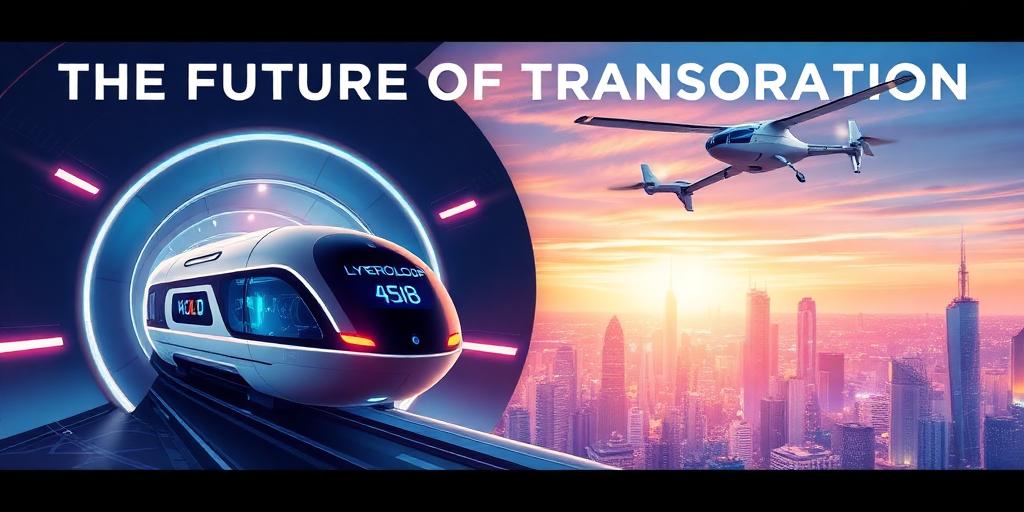The landscape of human mobility stands on the precipice of a profound transformation. While traditional modes of transport have long defined our cities and connections, two revolutionary concepts – Hyperloop and flying cars – promise to redefine speed, efficiency, and accessibility in the coming decades. This exploration delves into the technical foundations, potential impacts, and formidable challenges confronting these vanguard transportation systems.
Hyperloop: The Dawn of Near-Supersonic Ground Travel
Hyperloop technology, initially conceptualized as an open-source design, envisions passenger and cargo pods travelling at extremely high speeds through low-pressure tubes. By minimizing air resistance and friction, these systems aim to achieve speeds exceeding 700 mph, drastically reducing travel times between major urban centers. Companies like Virgin Hyperloop and HTT have made significant strides in testing and development, showcasing the feasibility of magnetic levitation within a vacuum-sealed environment.
The potential benefits of Hyperloop extend beyond mere speed. It offers a sustainable alternative to short-haul flights, reduces congestion on existing infrastructure, and could foster economic development in connected regions. However, the engineering complexities, immense infrastructure costs, and the regulatory hurdles associated with building extensive tube networks represent considerable obstacles to widespread deployment of this Hyperloop technology evolution.
Flying Cars and Urban Air Mobility (UAM): Reaching for the Skies
2The long-held dream of flying cars is rapidly approaching commercial viability, albeit not in the traditional sense of a road-to-air vehicle. The emerging paradigm of Urban Air Mobility (UAM) centers around electric vertical takeoff and landing (eVTOL) aircraft. These vehicles, designed for short-distance, on-demand aerial transport, are poised to revolutionize urban commuting and regional air travel. Companies such as Joby Aviation, Archer Aviation, and Lilium are at the forefront, developing prototypes that emphasize electric propulsion, quiet operation, and autonomous capabilities.
The practical applications of flying cars (or eVTOLs) are diverse, ranging from air taxi services and cargo delivery to emergency medical transport. They offer a potential solution to ground traffic congestion, particularly in sprawling metropolitan areas, embodying significant urban air mobility benefits. Nevertheless, the integration of UAM into existing airspace, the establishment of vertiports and charging infrastructure, noise pollution concerns, and stringent safety certifications present substantial challenges that require comprehensive regulatory frameworks and significant public acceptance for flying car practical applications.
A Symbiotic Future or Competing Visions?
While Hyperloop focuses on ultra-high-speed intercity travel, and UAM addresses intracity or regional aerial transport, their development trajectories are not mutually exclusive. A truly integrated future of transportation could see Hyperloop connect distant hubs, with eVTOLs providing last-mile aerial connectivity within those urban centers. Both technologies share a common thread: the pursuit of electric, autonomous, and sustainable mobility solutions that aim to alleviate the environmental burdens and inefficiencies of current transportation paradigms, fostering a sustainable future travel landscape.
Navigating the Roadblocks to Revolution
The path to mainstream adoption for both Hyperloop and flying cars is fraught with significant technical, financial, and regulatory hurdles. The sheer capital investment required for Hyperloop infrastructure is staggering, necessitating robust public-private partnerships and favorable government policies. For eVTOLs, air traffic management integration, cybersecurity, and public perception of safety are paramount concerns. Furthermore, the development of robust, scalable manufacturing processes and the establishment of comprehensive maintenance protocols are critical for long-term viability of high-speed ground transport. The convergence of technological innovation with societal acceptance and judicious regulation will ultimately determine the pace of their widespread implementation.
Conclusion
The advent of Hyperloop and flying cars signals a bold new chapter in human mobility. While their full realization remains a future endeavor, the ongoing advancements in propulsion, materials science, and autonomous systems underscore their transformative potential. These technologies are not merely faster ways to travel; they represent fundamental shifts in urban planning, economic geography, and our collective relationship with distance. As engineers and policymakers navigate the complex terrain of innovation and implementation, the vision of a seamlessly connected, high-speed, and elevated future of transportation draws ever closer.




